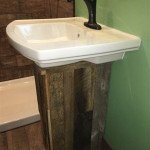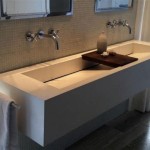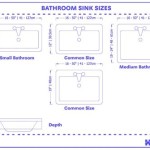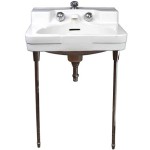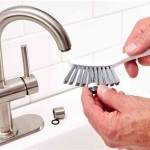How Do You Turn a Dresser Into Bathroom Vanity Units?
Transforming a dresser into a bathroom vanity unit can be a stylish and budget-friendly way to create a unique and functional space. Dressers, with their spacious drawers and often elegant design, can be repurposed to serve as a practical and aesthetically pleasing vanity. This project offers the possibility of creating a customized vanity that perfectly fits your bathroom's dimensions and complements your existing decor. This transformation involves a few key steps: choosing the right dresser, assessing its condition, preparing the dresser for the bathroom environment, adding plumbing and a sink, and finishing touches.
Choosing the Right Dresser
Selecting the appropriate dresser is crucial for a successful transformation. Consider the available space in your bathroom and the size of the dresser. A dresser that is too large will overwhelm the space, while one that is too small might not offer enough storage. The height of the dresser is also important, as you need sufficient clearance for the sink and surrounding area. Assess the dresser's overall condition. Look for drawers that operate smoothly and a sturdy frame. Minor imperfections can be addressed, but significant damage might require extensive repairs.
Preparing the Dresser for the Bathroom Environment
Before installing the dresser in the bathroom, it's essential to protect it from moisture and humidity. This step involves sanding and sealing the dresser's surfaces. Sanding the dresser smooths out any unevenness and creates a surface that is easier to paint. Apply a sealant, such as polyurethane or a water-based varnish, to protect the wood from water damage. This protective layer helps preserve the dresser's finish and prevent warping or mold growth.
Adding Plumbing and a Sink
The heart of a bathroom vanity is the sink, and its installation requires careful planning and plumbing work. Choose a sink that complements the dresser's style and provides enough space for washing your hands and face. The sink should be compatible with the plumbing system in your bathroom. It's advisable to consult with a plumber before proceeding with the installation, as they can ensure proper water connections and drainage. If the dresser doesn't have existing plumbing, consider hiring a plumber to create new connections.
There are various sink options available, including vessel sinks, undermount sinks, and drop-in sinks. Each type has its pros and cons, and choosing the right one depends on your preferences and the dresser's design. Vessel sinks sit on top of the counter and are often more decorative. Undermount sinks are installed beneath the countertop and offer a cleaner, more seamless look. Drop-in sinks are installed into a cut-out in the countertop and provide a straightforward installation.
Consider the faucet as well. Choose a faucet that complements the sink and the overall style of the vanity. There are numerous options available, ranging from classic to modern designs. Ensure the faucet is compatible with your bathroom's water pressure and plumbing system.
Installing the Sink and Faucet
After preparing the dresser and selecting the sink and faucet, it's time for installation. Begin by installing the faucet according to the manufacturer's instructions. Ensure the faucet is securely mounted and properly connected to the water supply.
Next, install the sink. The method of installation depends on the sink's type. Vessel sinks are simply placed atop the countertop, while undermount sinks require cutting a hole in the countertop. Drop-in sinks are installed into a pre-cut opening. Ensure the sink is securely mounted and properly sealed to prevent leaks.
Finishing Touches
Once the sink and faucet are installed, add finishing touches to complete the vanity. Consider adding a countertop that complements the dresser's style and provides a smooth surface for washing. Marble, granite, and laminate are popular options, each offering different characteristics and price points.
Install hardware, like drawer pulls and knobs, that complement the overall style of the vanity. Add a mirror above the sink to enhance the functional and aesthetic appeal of the vanity. Consider adding additional storage solutions, such as shelves or a medicine cabinet, to maximize space and organize your bathroom essentials.
/103058794-9279662b921c41259cb908f3cb19acd9.jpg?strip=all)
How To Turn An Old Dresser Into A Beautiful Bathroom Vanity

Turn A Vintage Dresser Into Bathroom Vanity

A Pro Renovator S 6 Tips For Turning Dresser Into Bathroom Vanity

Antique Dresser Turned Into Vanity Farmhouse On Boone
How To Make A Bathroom Vanity From Vintage Furniture Upcycgirl

Antique Dresser Turned Into Vanity Farmhouse On Boone

Diy Bathroom Vanity 12 Rehabs Bob Vila

Furniture Reincarnation How To Turn Your Old Dresser Into A Bathroom Vanity

Turn A Vintage Dresser Into Bathroom Vanity

How To Turn A Dresser Into Bathroom Vanity Wildfire Interiors
Related Posts
